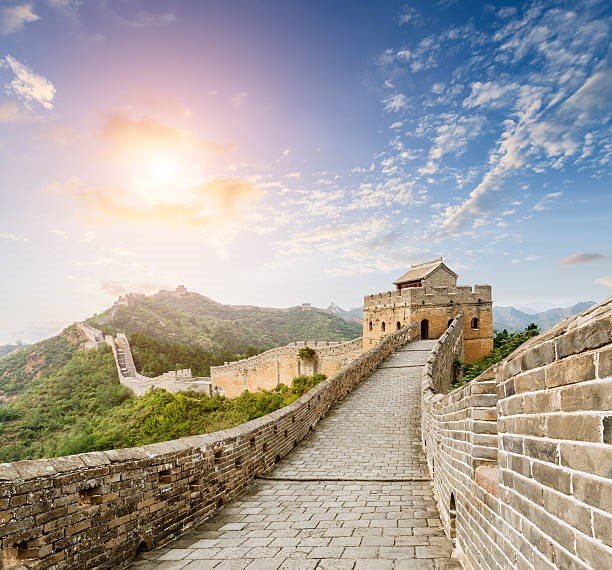The Great Wall of China, a colossal serpentine structure snaking across thousands of miles of mountains, plains, and deserts, stands as an enduring testament to human ambition, engineering prowess, and the enduring spirit of a nation. More than just a physical barrier, it is a powerful symbol of Chinese civilization, a historical chronicle etched in stone and earth, and a breathtaking wonder that continues to captivate and inspire millions worldwide. To truly explore the Great Wall is to embark on a journey through time, landscape, and the very essence of Chinese identity.
A Chronicle in Stone and Earth:
The Great Wall’s history spans over two millennia, with its origins dating back to the 7th century BC. Various independent kingdoms and dynasties built initial fortifications for defense against nomadic invaders from the north. However, it was during the Qin Dynasty (221-206 BC) under Emperor Qin Shi Huang that the disparate sections began to be unified into a more cohesive system. This monumental undertaking aimed to protect the newly unified empire from the Xiongnu tribes.
Subsequent dynasties, notably the Han, Sui, Jin, and particularly the Ming (1368-1644 AD), continued to build upon and reinforce the Wall. The Ming Dynasty witnessed the most extensive and best-preserved sections of the Wall that we see today, constructed with brick and stone, featuring watchtowers, fortresses, and strategic passes.
Exploring different sections of the Wall reveals the evolution of its construction techniques and purposes across these dynasties. Some older sections are simply rammed earth, while later Ming sections showcase intricate brickwork and sophisticated defensive architecture. Each stone and brick whispers tales of the laborers, soldiers, and engineers who dedicated their lives to its creation and maintenance.
A Tapestry of Landscapes:
The Great Wall’s immense length means it traverses an astonishing variety of terrains, offering breathtaking panoramic views.
- The Rugged Mountains: Perhaps the most iconic images of the Wall depict it snaking along steep, verdant mountain ridges. Sections like Badaling and Mutianyu near Beijing showcase this dramatic scenery, with the Wall clinging to the contours of the land like a stone dragon. Hiking these sections offers exhilarating climbs and unparalleled vistas of rolling hills and valleys.
- The Gentle Slopes: In other areas, the Wall meanders across gentler slopes and farmland, providing a more accessible experience. These sections often reveal the agricultural landscape that the Wall was intended to protect.
- The Arid Plains and Deserts: As the Wall extends westward, it ventures into more arid and desert regions. Sections like Jiayuguan, the westernmost fortress of the Ming Dynasty, stand starkly against the backdrop of the Gobi Desert, highlighting the Wall’s role as a frontier defense. Exploring these sections offers a sense of the vastness of the Chinese landscape and the challenges faced by those who built and guarded the Wall in such harsh environments.
- The Coastal Regions: The easternmost end of the Ming Dynasty’s Great Wall reaches the sea at Laolongtou (Old Dragon’s Head), where it appears to dip into the Bohai Sea. This unique section underscores the Wall’s comprehensive defensive purpose, extending even to the coastline.
Experiencing the Majesty:
Visiting the Great Wall is an experience that engages all the senses.
- The Physical Challenge: Walking along the Wall, with its uneven stones and varying inclines, provides a tangible connection to its history. Imagine the soldiers who patrolled these very paths centuries ago.
- The Visual Spectacle: The sheer scale of the Wall is awe-inspiring. Stretching as far as the eye can see, it underscores the immense human effort involved in its construction. The panoramic views from the watchtowers are simply unforgettable.
- The Whispers of History: Standing on the Wall evokes a sense of stepping back in time. The ancient stones and weathered battlements speak of empires, invasions, and the enduring spirit of a civilization.
- The Cultural Significance: The Great Wall is deeply ingrained in Chinese culture and national identity. It symbolizes resilience, strength, and unity. Visiting it offers a profound appreciation for this cultural heritage.
Popular Sections for Exploration:
For those planning a visit, several sections of the Great Wall offer distinct experiences:
- Badaling: The most popular and easily accessible section near Beijing, often crowded but offering well-maintained paths and stunning views.
- Mutianyu: Another well-preserved section near Beijing, known for its scenic beauty and less crowded atmosphere compared to Badaling. It also offers a toboggan ride down!
- Simatai: A wilder, unrestored section offering a more challenging but rewarding hiking experience. Night tours are also available here.
- Jinshanling: Known for its intricate architecture and beautiful scenery, Jinshanling offers excellent hiking opportunities and photographic perspectives.
- Jiankou: A rugged and partially unrestored section popular with experienced hikers, offering dramatic landscapes and challenging climbs.
- Huanghuacheng: A unique section where the Wall is partially submerged in a lake, offering picturesque views and boat rides.
- Jiayuguan: The westernmost fortress of the Ming Dynasty, offering a glimpse into the Wall’s role as a frontier outpost.
Preservation and the Future:
Despite its grandeur, the Great Wall faces ongoing challenges from natural erosion, human activity, and the passage of time. Conservation efforts are crucial to preserving this invaluable historical and cultural treasure for future generations. Visiting the Wall responsibly, respecting the site, and supporting conservation initiatives are essential for its long-term survival.
A Journey of Discovery:
Exploring the Great Wall of China is more than just a sightseeing trip; it’s a journey of discovery. It’s an opportunity to connect with history, marvel at human ingenuity, and witness the breathtaking beauty of the Chinese landscape. Whether you hike its rugged mountain paths, contemplate its ancient stones, or simply gaze at its seemingly endless expanse, the Great Wall leaves an indelible mark, reminding us of the enduring power of human endeavor and the rich tapestry of our shared past.


0 Comment